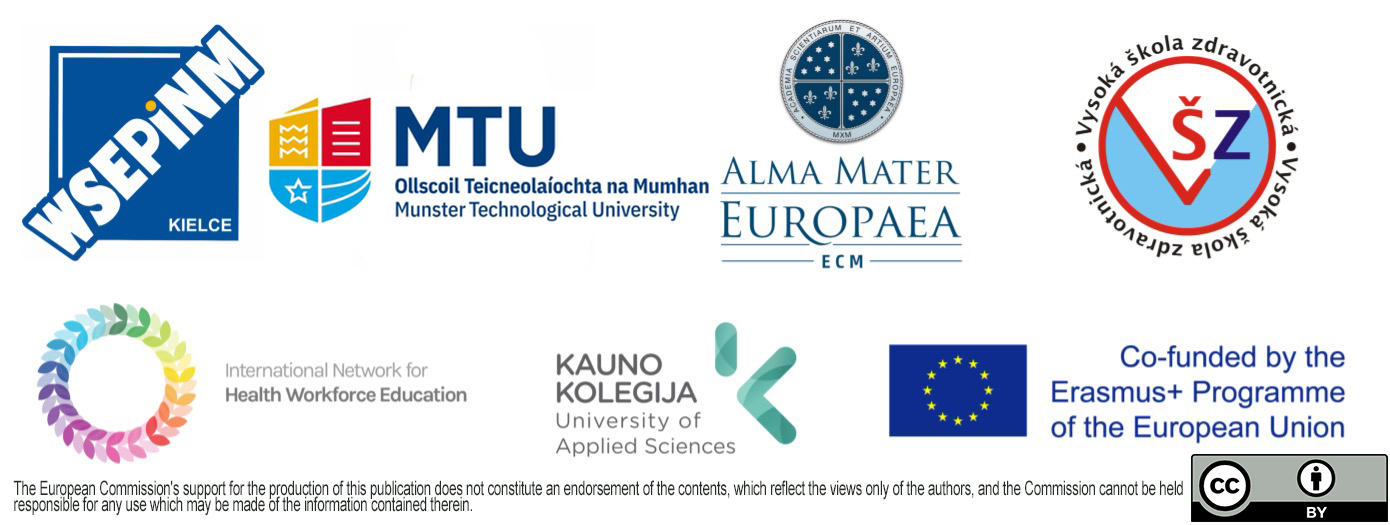De-escalation Techniques at Violent Patients in a Hospital Setting

The framework of the course „De-escalation techniques at violent patients in a hospital setting“ consists of 4 pillars that can be divided into individual blocks (prevention of violent behavior, de-escalation, using limiting and restrictive means, care of a restrained patient). The aim is to develop some guidelines for hospital personnel to prevent violent behavior and take proactive measures in this regard. The course is a training program that consists of 20 lessons and focuses on one’s own safety and emotion control, verbal as well as nonverbal de-escalation techniques, using limiting and restrictive means and care of a restrained patient.
By the end of the course, the applicant will be able to:
- analyze and assess verbal as well as non-verbal signs of violence,
- define the most common causes of violent behavior of patients,
- adequately communicate with an agitated, aggressive and/or violent patient,
- call for help in time, take refuge,
- engage a team of people that help in restraining a patient by suitable limiting and restraining means,
- safely restrain a patient,
- monitor the restrained patient closely,
- use scoring systems in relation to the limiting and restraining means,
- know the relevant laws and regulations related to restraining patients and comply with them.
Specification of the output knowledge and professional competences and skills
The graduate of the certified course Prevention of violence in health care will be able to:
1. Remember: The graduate identifies and defines the concept of violence, its causes, factors that add to an improper behavior of clients as well as personnel.
2. Understand: The graduate explains the concept of violence in health care, he/she is acquainted with the topic, identifies the phases of conflict in communication and is able to defend him-/herself against the individual forms of attacks (workplace violence management).
3. Apply: The graduate is able to put the learned information into practice. The graduate uses physical as well as verbal defense means for prevention of violence in health care. The graduate is able to avert a verbal or physical threat, uses assertive techniques to avert different forms of attacks (humiliation, deterrence, sexual harassment, mobbing and bossing, dealing with criticism – fair and unfair) and cares for the patient even during the critical phase of an escalated interpersonal interaction.
4. Analyze: The graduate is able to assess different „conflict“ situations and chooses an appropriate form of prevention or defense against the conflict.
5. Synthesize: The graduate is able to summarize the conflict situation and draw general conclusions from the specific case of violent behavior at the workplace (psychology and mutual interaction in case of violence).
6. Evaluate: The graduate is able to recognize a specific form of violence and assess the situation. The graduate adequately responds to the conflict situation and draws specific conclusions (debriefing of the violent situation).
Contents of the course
1. Definition of violence, aggression, agitation, study on violence in health care (1 lesson)
2. Causes of violence – institutional factors, personal factors, organic causes of violence (2 lessons)
3. Relationship between the communication and the violence (4 lessons; the participants learn the importance of communication in health care and its relation to violence. This part deepens the understanding of communication as a key to solving conflicts that might arise during the communication with the patient, relatives or colleagues; nonverbal as well as verbal communication during stress situations).
4. Verbal de-escalation (4 lessons; this part is focused on selection and practice of communication techniques that can be used during the confrontation with conflict people – patient, patient family, colleagues, verbal de-escalation techniques – mirroring, questions, working with silence, absurd theater).
5. Using restrictive and limiting means, restricting a violent patient, legal issues (4 lessons; the participants will practice basic self-defense techniques in case of a physical threat or attack. De-escalation techniques in case of a physical attack will be tailored to the situations the participants might get into. The safe restriction/limiting of a patient on a bed / in a hospital corridor will be practiced as well. This block includes also the issue of rights of physically restrained patients).
6. Review, model situations
During the final 5-hour block, participants are going to prepare an analysis of a specific conflict situation based on their own choice or instructor assignment, to demonstrate their theoretical knowledge (identification of a threat, phases of a conflict, identification of verbal and non-verbal signals of aggression) as well as practical skills (appropriate defense in the given situation). Students hold their presentations individually or in smaller groups.
Tools and equipment:
Static video camera, GoPro camera, restrictive means, documentation, chairs, mattresses, hospital bed
